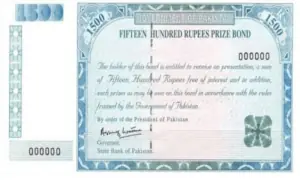How investors are spending billions on classic cars
In 1977, a Ferrari owner offloaded his 1962 250 GTO because his wife complained it was too noisy, according to a story recounted by Andrea Modena, head of Ferrari’s classic car division. It was either her or the car.
Times have indeed changed. In 2018, the same Ferrari model became the most expensive car ever sold when it fetched $48 million at auction. Last year, that record was flattened by a 1955 Mercedes-Benz 300 SLR Uhlenhaut Coupé that roared to 135 million euros ($149 million).
These kind of megadeals are at the vanguard of billions of dollars of annual spending on classic cars globally in a wave of investment in this alternative asset.
Vintage cars have risen 185% in value over the past decade, outstripping the growth of its luxury rivals wine, watches, and art, and ranking second only to rare whiskies, according to Knight Frank’s wealth report published this year.
The market has expanded beyond a comparatively small community of collectors to include investors drawn by the prospect of high returns plus a lack of correlation with mainstream portfolio assets such as stocks and bonds.
This year, Azimut is launching what it describes as the world’s first mutual fund to invest in vintage vehicles, and it’ll only bet on cars with a unique history worth more than 1 million euros each.
While that fund will have no end date so can receive new money indefinitely, small Swiss asset manager Hetica Capital launched a 50 million euro closed-end fund in 2021, which it also said was the first of its kind.
The Hetica fund, which is targeting returns of 9%-15% after seven years, has bought a dozen cars so far and aims to get to 30-35 cars by the fifth year, leaving the last two years to sell the vehicles and pay investors.
It’s not a sector for the financially faint-hearted.
Both the Azimut and Hetica funds have a minimum entry investment bar of 125,000 euros.
Running costs for car collections, also including hefty storage and insurance fees, could easily amount annually to 5-6% of the portfolio’s value, according to Florian Zimmermann, who started buying vintage cars when he worked at Mercedes-Benz and has since built a collection of 300 vehicles with a partner.
“So it’s getting harder and harder to find the proper mechanics to keep these cars alive. And you have to spend quite an amount of money to keep all these cars in running condition,” Zimmermann told Reuters.
Indeed investment funds managing car portfolios can be a money-spinner for the classic car divisions of carmakers, which not only provide repairs and parts, but also certify the authenticity of vehicles to take part in shows and competitions.
The certification process alone can cost between 15,000-20,000 euros.
Moreover, a small scratch or dent, or a replacement part, can deal a heavy financial blow. For example, replacing just the bumper of a rare vintage car can cost $15,000, said Modena.
Nonetheless, the classic car market is expanding; the value of vintage cars rose 25% in 2022, their strongest performance in nine years, the Knight Frank Luxury Investment Index showed.
For the latest news, follow us on Twitter @Aaj_Urdu. We are also on Facebook, Instagram and YouTube.




















Comments are closed on this story.